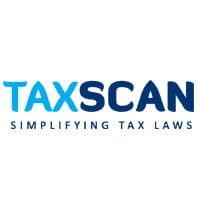Unclear basis of Suo-Motu Disallowance of Exempt Income by H T Media Limited: Delhi HC rejects Estimated Disallowance [Read Order]
![Unclear basis of Suo-Motu Disallowance of Exempt Income by H T Media Limited: Delhi HC rejects Estimated Disallowance [Read Order] Unclear basis of Suo-Motu Disallowance of Exempt Income by H T Media Limited: Delhi HC rejects Estimated Disallowance [Read Order]](https://www.taxscan.in/wp-content/uploads/2022/12/Suo-Motu-Disallowance-of-Exempt-Income-by-H-T-Media-Limited-Delhi-HC-rejects-Estimated-Disallowance-TAXSCAN.jpg)
A Division Bench of the Delhi High Court recently held that, the disallowance estimated by the assessee, H T Media Limited, the publisher of Hindustan Times newspaper and Mint for calculation of exempt income was not founded on a clear basis and upheld the findings of the Income Tax Appellate Tribunal(ITAT) and the Assessing Officer (AO).
In the Assessment Year (AY) 2013-2014, the Assessee had earned dividend income of Rs. 7.04 Crores and had suo-mouo disallowed Rs.9,75,000/- under Section 14A of the Income Tax Act, towards expenses pertaining to tax free income. The AO being unsatisfied with the suo-motu disallowance by the Assessee towards administrative expenses, determined a sum of Rs .1.15 Crores as the disallowance towards administrative expenses under Rule 8D(2)(iii) of the Income Tax Rules, 1962.
In the subsequent appeals filed for the same Assessment Year and 2012-2013, the ITAT held in favour of the revenue and against the assessee. Aggrieved by the decisions, the assessee, HT Media Limited approached the Delhi High Court in this Income Tax Appeal.
The appellant represented by V P Gupta and Anurav Kumar submitted that, Tribunal erred in upholding the disallowance without appreciating that the AO has not recorded his satisfaction and therefore, the disallowance of Rs. 1,00,000/- in its Return of Income should have been accepted.
It was also submitted that, the Tribunal failed to appreciate that the disallowance of administrative expenses on the basis of salary cost of the Assessee’s finance department was calculated in the ratio of exempt income to gross receipt, which was justified and reasonable and that the said computation had been upheld by the Delhi High Court in AY 2008-09.
On behalf of the Revenue, Senior Standing Counsel Ajit Sharma and A Renganath submitted that, the Tribunal and the Commissioner of Income Tax (Appeals) have returned concurrent findings in both the appeals upholding the satisfaction recorded by the AO for disallowance of the expenses under Section 14A of the Income Tax Act. He states that the Tribunal has relied upon the judgment of this Court in Assessee’s own case for AY 2010-11 while determining the value of investment to be considered for disallowance.
It was also submitted in the rejoinder by the appellant that the revenue was incorrect to contend that in AY 2010-11 and 2011-12 disallowance under Section 14A of the Income Tax Act, read with Rule 8D of Income Tax Rules has been upheld.
The Court observed that, on the principle of consistency, the submissions of the appellant are incorrect and contrary to the record.
The bench of Justice Manmohan and Justice Manmeet Pritam Singh Arora also observed that, the submission of the counsel for the Assessee that the issue of satisfaction for AYs 2010-11 and 2011-12 was remanded by ITAT to AO is also not borne out from the record, as the ITAT remanded the said issue back to the AO with the mandate for determining the average value of investment to which Rule 8D(2) has to be applied and thereafter to calculate the expenditure incurred by the Assessee on non-exempt investments including interest portion.
It was further observed that, “the dissatisfaction of the AO is expressly recorded in the assessment order. The said dissatisfaction has been upheld by the appellate authorities after perusing the records of the Assessee” and the court refused to interfere with the findings of the authorities.
To Read the full text of the Order CLICK HERE
Support our journalism by subscribing to TaxscanAdFree. Follow us on Telegram for quick updates.
H.T. MEDIA LIMITED vs PRINCIPAL COMMISSIONER OF INCOME TAX-4 , 2022 TAXSCAN (HC) 957 , Mr.V.P. Gupta with Mr.Anunav Kumar , Mr.Ajit Sharma ,Mr.A.Renganath

